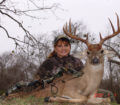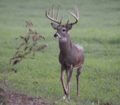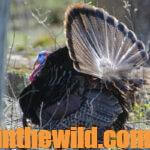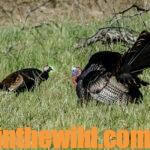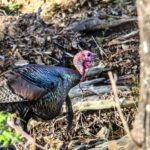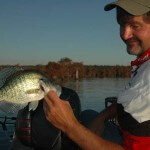Editor’s Note: I’ve heard some hunters say, “Sitting in a shooting house just isn’t hunting.” Other hunters have told me, “I’m not climbing a tree to hunt a deer.” Still others have said, “Because sitting in a ground blind increases the deer’s ability to smell you and limits your ability to see, I always hunt from a tree stand.” Outdoorsmen often get notions that one particular type of stand works better than another. However, the most-successful deer hunters who consistently take big bucks every season use all three. These master hunters let the terrain, the hunting conditions, the weather and the expertise and the ages of the hunters they take with them dictate how, where, when and what type stand they’ll use.
 Let the Deer Tell You Where to Hunt:
Let the Deer Tell You Where to Hunt:
You must scout intensively and locate the home range of an older-age-class buck to have success afield. You can’t simply use the kind of stand you like and set it up, hoping a deer will come by it. Determine where you have the best opportunity to see a buck during daylight hours, and then evaluate that location to decide whether you can hunt best there from a tree stand, a ground blind or a shooting house. To find a mature buck and learn when and where he moves, use a motion-sensor trail camera, and attach it to a tree near a deer trail. Because the camera gives you the day and the time that it’s taken the picture, you’ll know exactly when that buck should appear.
Evaluate the stand-site potential around the trail. If you don’t locate trees big enough for a tree stand, search for a relatively-level, clear spot to set up a portable ground blind or to construct a natural ground blind. If you consistently see large numbers of deer utilizing a particular trail in the pictures produced by your motion-sensor cameras prior to hunting season, you may want to build a shooting house well away from the trail but at a distance that you still can shoot to the trail to hunt in any type of weather.
Think about Who Will Hunt from That Stand:
Most hunters enjoy taking friends, family members and business associates deer hunting; however, often these people don’t have the time or the experience to locate the deer they want to take and set-up a stand. I’ll set-up stands for them or stands I can hunt from with them, which generally means I’ll use ground blinds or shooting houses. Inexperienced hunters will feel uncomfortable hanging on the side of a tree in a 5- to 10-mile-per-hour wind. When hunting with novice hunters, consider the possibility of constructing shooting houses or utilizing portable ground blinds. I like a portable, tent-like pop-up ground blind that totally conceals the hunter. Then the hunter can move around, stretch, sleep or change positions safely without spooking the deer. If you want to take youngsters with you, a portable ground blind enables the youngsters to play with books, games, colors, snacks and toys or nap while you hunt. For inexperienced hunters to have the best opportunity to see and take deer, put them in a shooting house, a portable ground blind or a natural ground blind. But for portability and maneuverability, you can’t beat a fixed-position tree stand or a portable climbing stand. To learn how hunters can use different kinds of stands to take deer, let’s look at the different options for hunting clear-cuts.
 Learn Which Stands and Why Are Best for Hunting Clear-Cuts:
Learn Which Stands and Why Are Best for Hunting Clear-Cuts:
Deer love clear-cuts because they provide food, cover and sanctuary. The age of the clear-cut you hunt determines the type of stand you’ll need to hunt that clear-cut. You can:
* put up a tree stand on the edge of the clear-cut. During the first five years after the clear-cutting of a property, the clear-cut will grow up with grasses, brambles, briars, bushes and young pines that seem to present an impenetrable 4- to 5-foot-high wall of cover that you can’t pass through or navigate. However, you can use a climbing tree stand or a fixed-position stand in a tree on the edge of that clear-cut to look down into the clear-cut. This high vantage point will enable you to see openings in the cover, deer moving through the clear-cut and bucks when they stand up in the clear-cut.
* use a ground blind after 5 to 8 years of the clear-cut’s growth. By that time, small pines will shade the ground and much of the underbrush will have died out. Plan to charter an airplane, fly over the clear-cut with a hand-held GPS (global positioning system), and search for openings in the clear-cut where for some reason the pines haven’t grown, perhaps because the ground’s too wet, or the deer have fed there heavily. Mark these openings as waypoints with your GPS. Once you return to the ground, pinpoint these openings in the clear-cut, scout them for deer activity, and set up blinds on the edges of productive-looking openings. Since young pines won’t hold tree stands, and you won’t have enough room to build a shooting house, you’ll need to create a natural ground blind or take a portable pop-up blind with you.
* utilize a ladder stand after the first thinning. As a pine plantation grows, the timber company will thin the trees, cutting down about every third row. After that first thinning, depending on the size of the pines, you often can lean a ladder stand against the young pines and hunt over those cleared-out rows. Too, you can set-up a ground blind on one of those cleared rows to spot bucks as they pass through the pines.
 * build a shooting house next to the pine plantation. Usually hunters will build shooting houses to hunt over green fields. Throughout much of the East and Midwest, outdoorsmen plant green fields on the edges of clear-cuts. Then when the deer bed in the clear-cuts and move to the green fields to feed, hunters can take them from shooting houses, which offer comfortable places to hunt during inclement weather.
* build a shooting house next to the pine plantation. Usually hunters will build shooting houses to hunt over green fields. Throughout much of the East and Midwest, outdoorsmen plant green fields on the edges of clear-cuts. Then when the deer bed in the clear-cuts and move to the green fields to feed, hunters can take them from shooting houses, which offer comfortable places to hunt during inclement weather.
You’ll find versatility often is the key to bagging mature bucks. Have or construct several types of stands on your hunting property where deer move. Then you can match the hunter to the hunting situation with the stand best for the terrain and drastically increase his odds for bagging a buck this season.
To learn more about hunting deer with John E. Phillips’ Amazon Kindle eBooks, print books and Audible books (the latest Audible is “How to Hunt Deer Like a Pro”) and Nook books, click here at https://johninthewild.com/books/#deer. You can type in the name of the book and download it to your Kindle, and/or download a Kindle app for your iPad, SmartPhone or computer. For a free download on how to make jerky from venison to provide a protein-rich snack, choose “How to Prepare Venison Jerky: The Ultimate Snack Food” at johninthewild.com/free-books.

